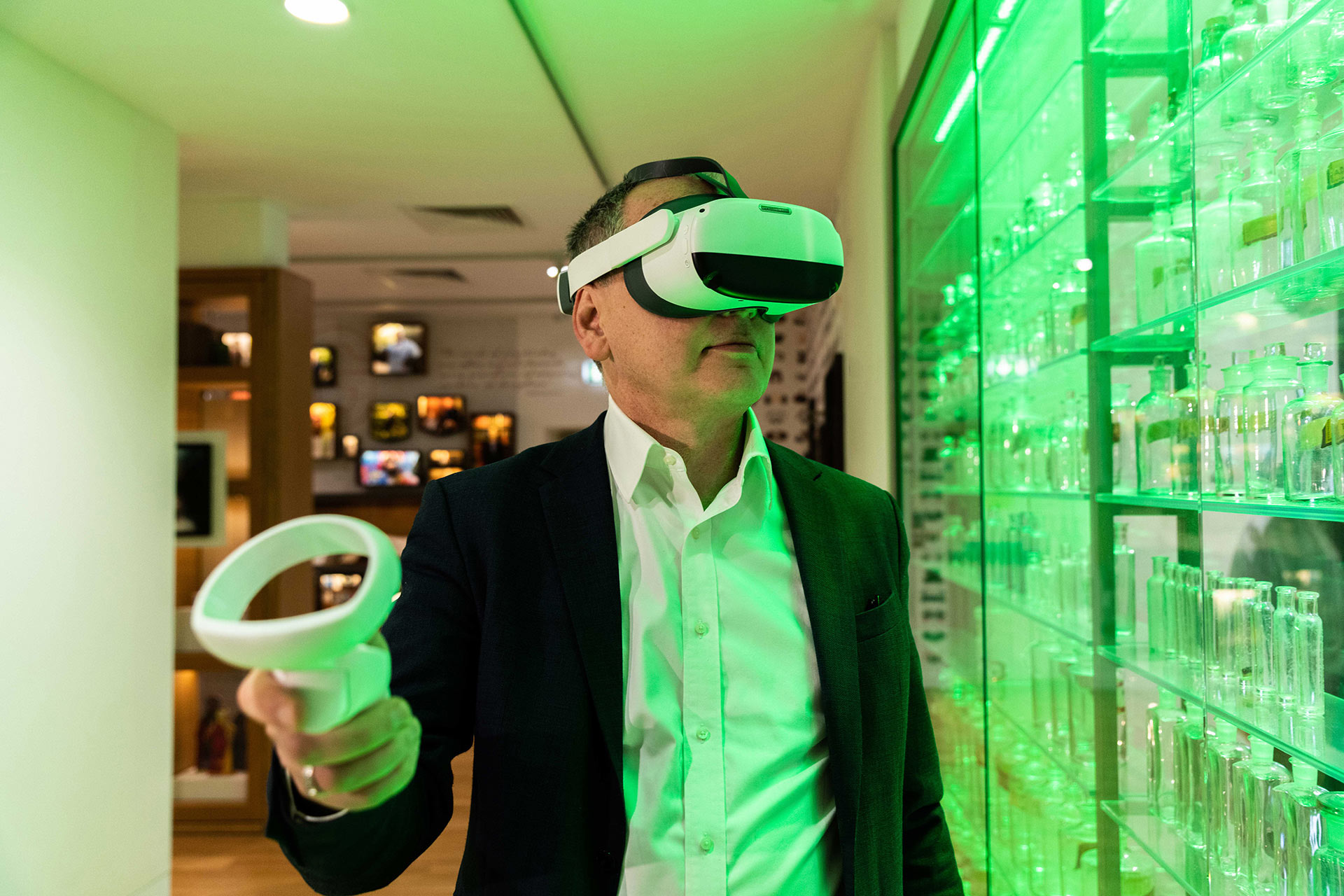Many organizations are seeking ways to tackle the growing cost of energy while meeting their own ambitious sustainability goals. Oliver Prang works as a Digital Business Developer at SMC, a company specializing in pneumatic technologies. Here he explains how Equipment as a Service models can help conserve electricity and reduce carbon emissions.
Global warming is a reality—something Oliver Prang experienced personally last year. The trained software developer also volunteers as a firefighter in his free time. He and many others witnessed first-hand the devastating impact of the catastrophic flooding in Germany’s Ahrtal region during their relentless cleanup effort.
Oliver Prang, Digital Business Developer at SMC, with pneumatic machinery
The Rhineland-Palatinate native comments, “These types of natural disasters are likely to become more and more common in the future due to climate change. At the same time, the price of raw materials and energy continues to rise. This is why I am passionate about finding ways to conserve energy and reduce carbon emissions.” This is true in his personal life, but especially in his work. “We can do something about it—and digitalization gives us the tools we need.”
Conserving Resources with the Internet of Things
In his role at SMC, Oliver Prang advises companies on pneumatic technologies and digital use of machine data. SMC’s products and solutions are employed to automate industrial processes in a wide range of sectors such as auto manufacturing, food production and electronics.
Exhibition area at SMC
The starring role in pneumatics, however, is played by something not all that remarkable: compressed air. Without it, industrial manufacturing would come to a standstill. But as omnipresent and fleeting as this medium seems, it doesn’t come for free. Air compressors require electricity, and energy prices have jumped significantly in recent months.
Conversely, reducing the need for compressed air translates to savings in electricity, money and carbon emissions. “Unfortunately, we often see just the opposite occurring in the manufacturing industry,” remarks Prang. “From my work I know that a great deal of compressed air—and therefore electricity—is wasted every day because of a lack of transparency and insight about machinery consumption and leakages.” It is not unusual for older machines that are not adequately monitored or serviced to lose 20 percent or more of their compressed air.
“I want to stop this wastage,” says Prang. “Digitalization is ideal for this purpose. It allows us to implement holistic solutions, track consumption with sensors and visualize them centrally on a Cumulocity IoT platform.” In other words, our customers can assess exactly where compressed air is being used and wasted across all the machines in a production line.
Oliver Prang, explaining Energy Transparency @ SMC
Efficiency Boost Thanks to Equipment as a Service
With solutions like these, we can identify deviations from set points and even out consumption peaks. Most importantly, leaks can be localized and contained before becoming too large or relevant. “This works especially well when SMC is in charge of monitoring and maintenance. We call it EnergyTransparency@SMC,” explains Prang. It lets SMC’s customers concentrate on producing their products. “We work behind the scenes ensuring smooth and efficiently running processes.”
Smart connectivity of IoT sensors is a way for the world of automation to make a valuable contribution to climate protection by reducing consumption of compressed air, electricity and other energy sources. This significantly improves carbon footprint and lowers energy costs. Oliver Prang is convinced: “The more companies leverage these tools, the faster we’ll be able to transform to a more cost-efficient, climate-friendly economy, which will not just benefit us now or in three years, but for generations to come.”


